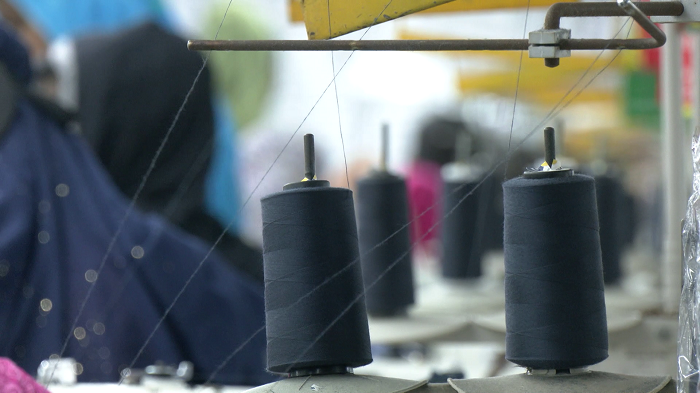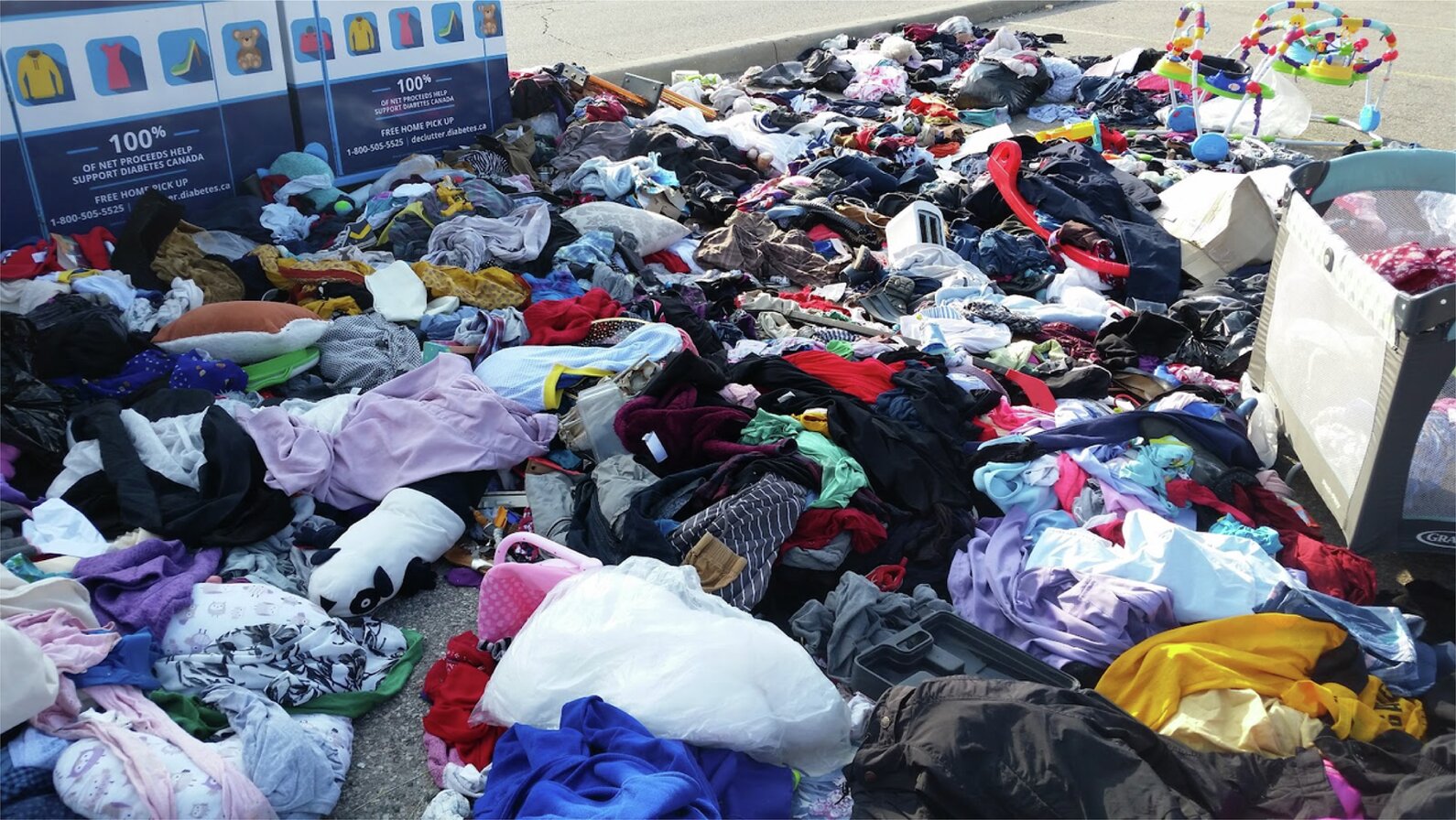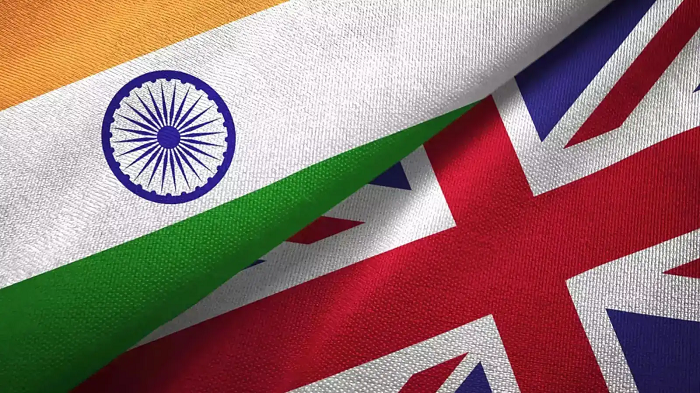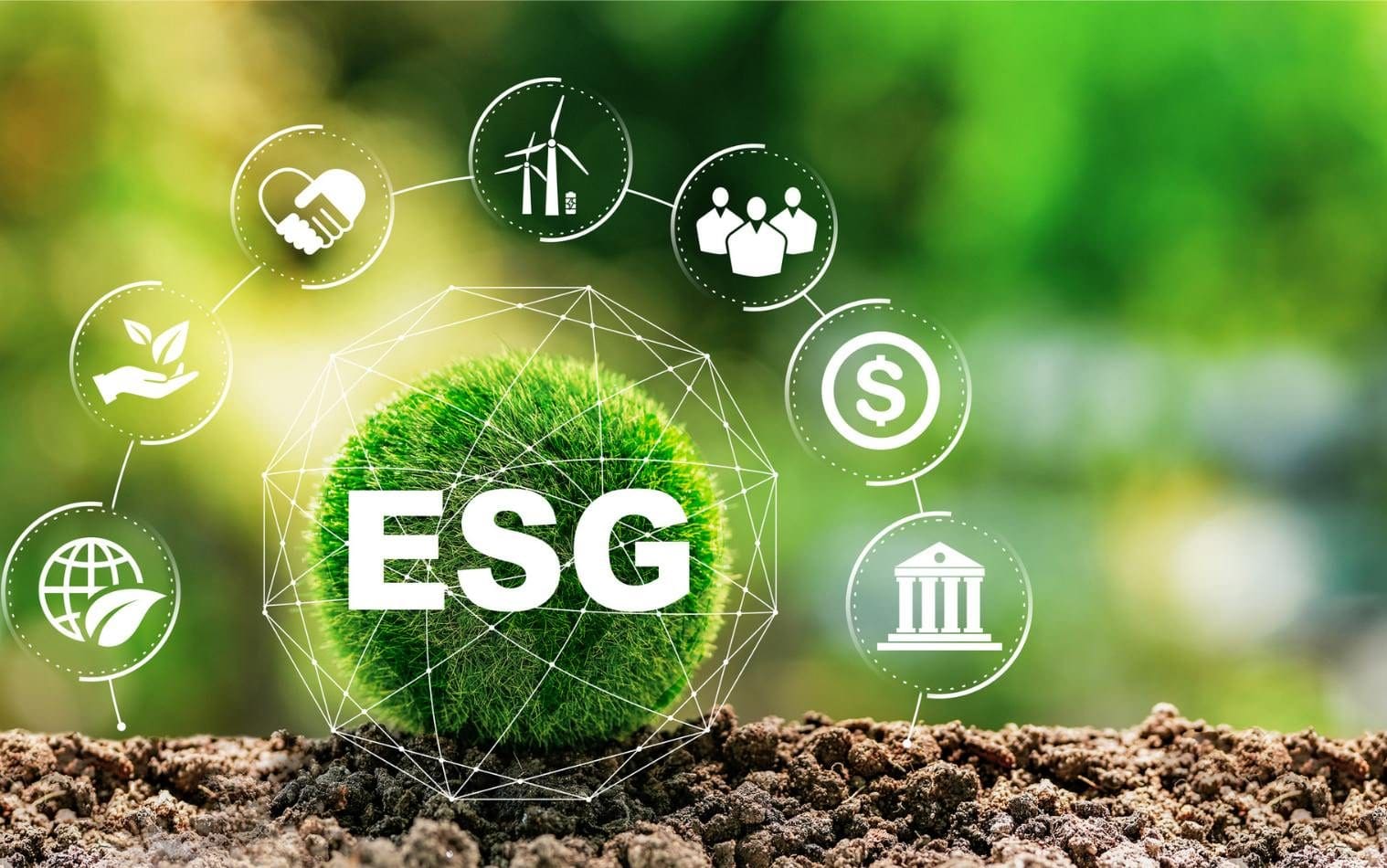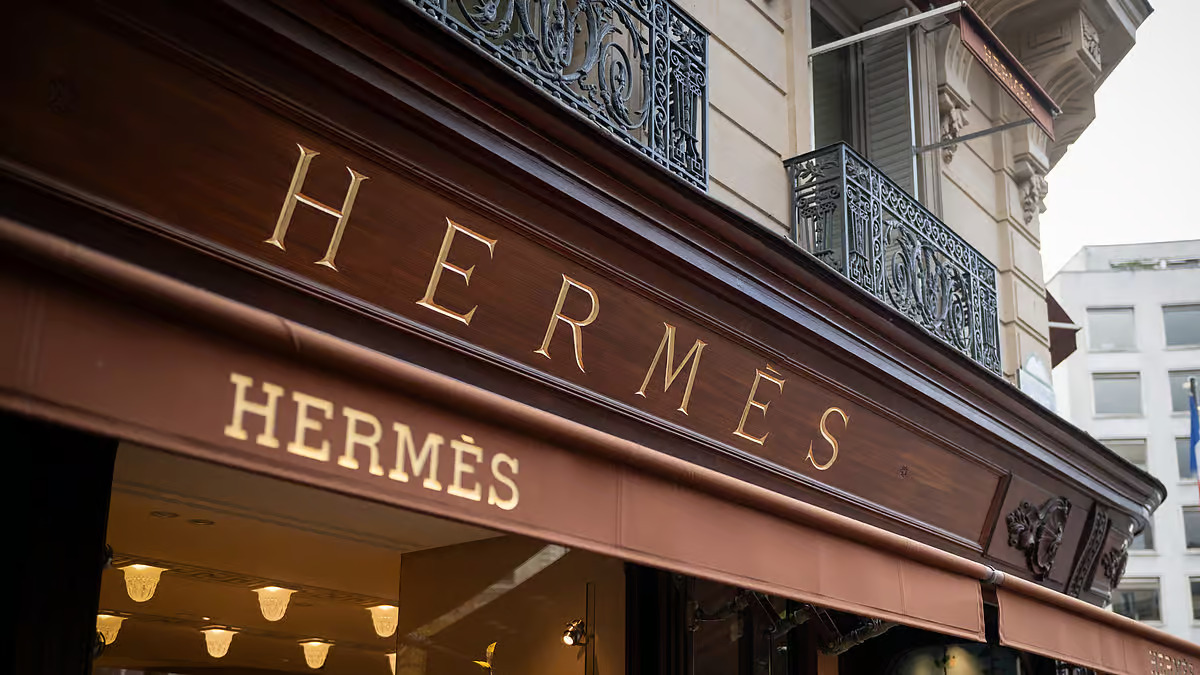
As the global fashion landscape continues to evolve, South Korean brands are emerging as pioneers in creating immersive retail experiences. Unlike traditional approaches that prioritize product over experience, these brands are leveraging technology, art, and storytelling to engage consumers on a deeper level.
A prime example is Gentle Monster, a brand that has rapidly grown into global prominence. Unlike traditional eyewear retailers, Gentle Monster has transformed its stores into mesmerizing art installations. Customers are no longer simply buying glasses; they’re embarking on a sensory journey. This emphasis on experience over product has propelled the brand to a staggering $440 million in revenue in 2024. “Retail is driven by humans’ curiosity,” asserts Hankook Kim, CEO of Gentle Monster. This philosophy is evident in the brand’s every move, from its avant-garde designs to its otherworldly stores.
A multi-sensory approach
The trend extends beyond eyewear. South Korean fashion brands like Ader Error and 3.1 Phillip Lim are also known for their innovative retail concepts, often incorporating elements of art, music, and technology. These brands understand that the shopping experience is more than just buying clothes; it's an opportunity to connect with a brand's values and identity. The success of K-brands highlights the growing importance of immersive experiences in retail.
Learning from K-fashion
Te lessons from South Korean fashion brands are clear:
• Prioritize experience over product: Create environments that engage customers on multiple levels, from sight and sound to taste and touch.
• Embrace digital and physical integration: Blend online and offline channels to create seamless and immersive customer journeys.
• Collaborate with other industries: Partner with artists, musicians, or food brands to create unique and unexpected experiences.
• Understand your audience: Deepen your understanding of consumer desires and preferences to tailor experiences accordingly.
As consumers become increasingly discerning, brands must go beyond simply selling products and create meaningful connections. By engaging all five senses, K-brands are able to capture the hearts and minds of their customers, fostering loyalty and driving sales. As the global fashion industry continues to evolve, it's clear that South Korean brands are setting the pace. Their innovative approach to retail is a testament to the power of immersion and the limitless possibilities of the fashion world.
Less than 4 per cent of the designers participating in London Fashion Week (LFW) have published emissions reduction targets, as against 44 per cent of UK companies with such goals, reveals a report by ethical non-profit Collective Fashion Justice.
According to the report, only 3.4 per cent of the British Fashion Council members have aligned their emissions targets with the Paris Agreement.
With prominent brands like Yoox, Net-a-Porter, and Savile Row as members, the British Fashion Council advises on key issues in the British fashion industry. Yet, only five brands—Burberry, Mulberry, Margaret Howell, Rixo, and Kyle Ho—have set science-based targets in line with the Paris Agreement.
Fashion Revolution, another non-profit advocating for industry reform, reports, 58 per cent of the world’s 250 largest fashion brands show no clear progress on climate targets, indicating that the issue extends beyond fast fashion. Despite the fashion industry being responsible for an estimated 10 per cent of global carbon emissions, reform has been slow. Emma Håkansson, Founder of CFJ, points out, the industry prioritises profit and business-as-usual over climate action.
Håkanssonemphasises, the industry needs to take urgent action against fossil fuel-based and animal-derived materials like leather and wool, due to their high methane footprint. However, disinformation about their environmental impact hinders progress.
Employing 800,000 people and contributing £26 billion to the economy, the UK fashion industry faces few incentives to tackle the climate crisis. Aja Barber, Author, Consumed, calls for greater accountability, suggesting tax cuts for brands that meet their climate goals.
As of Aug 22, 2024, the area under cultivation in India reduced to 111.386 lakh hectare from 122.742 lakh hectare during the same period last year. All major cotton-producing states have reported a decline in acreage this season.
Two of the largest cotton-producing states, Maharashtra and Gujarat have witnessed a significant decrease in cotton cultivation. Rajasthan and Punjab are the most affected states by this reduction, largely due to the impact of the Pink Bollworm infestation last season, which discouraged farmers from planting cotton.
Cotton cultivation in India begins in June and typically continues until August or mid-September, so the current shortfall in the area under cotton cultivation is unlikely to recover as more than 90 per cent of sowing has been completed. According to the state-wise detailed weekly report by the Ministry of Agriculture, there has been an approximate 9 per cent decrease in the total area under cotton cultivation this year compared to the last year.
Last year, India's average cotton sowing area stood at 122.951 lakh hectare during this corresponding week. In Punjab, the acreage has drastically reduced to just 1 lakh hectare from 2.140 lakh hectare last year, while Rajasthan's area has decreased from 7.908 lakh hectares to 5.132 lakh hectare.
The report further notes, Maharashtra's cotton sowing area has decreased to 40.785 lakh hectare from 41.866 lakh hectare last year, Madhya Pradesh to 6.149 lakh hectare from 6.500 lakh hectare, Karnataka to 6.690 lakh hectare from 6.557 lakh hectare, Haryana to 6.650 lakh hectare from 6.584 lakh hectare, Gujarat to 23.580 lakh hectare from 26.790 lakh hectare, Telangana to 17.090 lakh hectare from 18.018 lakh hectare, and Andhra Pradesh to 3.500 lakh hectare from 3.690 lakh hectare.
Puma is streamlining its management structure. The German sportswear giant has appointed IndrajeetSen, Group Executive as the new Vice President-Sourcing after Anne-Laure Descours, an employee since 2012, her departure from the company.
Having joined Puma in 2016, Senmost recently served as Vice President of Footwear Development and Sourcing and previously worked for German retailer Deichmann. In his new role, he will oversee global sourcing and development for footwear, apparel, and accessories, as well as operations and sustainability.
Arne Freundt, CEO, says, besides playing an instrumental role in the company’s footwear business, Sen has excelled in various key roles, including skillfully managing the challenges of the COVID pandemic, diversifying supply chain, and driving exceptional operational efficiency. His forward-thinking approach, people-focused mindset, and constant willingness to challenge the status quo make him the ideal leader to drive Puma’s next phase of growth.
In H1 FY24, Puma’s sales increased by 1.3 per cent to €4.2 billion compared to the same period in the previous year before adjusting for exchange rates. But the brand’s sales declined by2.1 per cent in euro terms. Sales in Americans grew by 5.1 per centand 1.2 per cent in the Asia-Pacific region, while they contracted by 2.2 per cent in Europe, the Middle East, and Africa. Operating profit for the period dropped by 5.1 per cent to €276 million.
Despite this, Puma expects full-year sales growth of around 5 per cent after adjusting for exchange rates, with operating income projected to be between €620 million and €670 million.
Preparations for Bharat Tex 2025, scheduled from February 14-17, 2025, are in full swing, with a key Steering Committee meeting held on August 28, 2024. During the meeting, industry leaders shared insights into the event's growing significance.
Rahul Mehta, Chief Mentor of Clothing Manufacturers Association of India (CMAI), underscored Bharat Tex 2025 as a vital platform for showcasing India's entire textile value chain, from fiber to garment. He pointed out that the expo presents a unique opportunity for international buyers to explore India's textile capabilities in one place. Mehta also highlighted the event's focus on sustainability, emphasizing India's progress in eco-friendly manufacturing.
Vijay Agarwal, Vice Chairman of The Cotton Textiles Export Promotion Council (TEXPROCIL), reinforced the importance of Bharat Tex 2025, noting that the event will highlight both exports and India’s domestic market. He emphasized that the expo will cover the full textile value chain, from cotton and fiber to high fashion, with a strong focus on ESG practices.
The expo is designed to bolster India's standing as a global textile hub. Bharat M Chhajer, past Chairman of Powerloom Development & Export Promotion Council (PDEXCIL), a prominent figure in the industry, discussed the event's growth since its first edition in 2024, noting the increased focus on organic materials and natural fibers, such as those sourced from pineapple, banana, and fruit grains. Dewas, a significant participant, is set to feature an expanded range of products this year.
With a goal of attracting 4,000 buyersup from 3,000 last yearBharat Tex 2025 aims to support India’s ambitious target of reaching $100 billion in textile exports, as set by Union Minister Giriraj Singh. The event is expected to further establish India as a premier sourcing destination in the global textile market.
Victoria's Secret & Co reported a 1 per cent Y-o-Y decline in net sales to $1.417 billion in Q2, FY24.
Total comparable sales of the Reynoldsburg, Ohio-based company declined by 3 per cent during the quarter ended Aug 3, 2024. The lingerie giant posted a net income of $32 million for the second quarter.
Timothy Johnson (TJ), Interim CEO and CFO, notes, the financial results for the second quarter came in at the high end of expectations, and the company delivered year-over-year quarterly operating income growth for the first time since 2021. It was encouraged by the continued sequential improvement in quarterly sales results in North America for the fourth consecutive quarter, with sales trends improving in both stores and digital channels.
The company attributed its success to the launch of new collections like the Victoria’s Secret Dream bra, the Pink Friday back-to-campus event, and the steady growth of VS Sport. These initiatives led to better product acceptance, disciplined inventory management, and an increase in gross margin dollars and rate expansion. Additionally, the International business and Adore Me brand saw high-single-digit sales growth.
Looking ahead, Victoria's Secret predicts third quarter net sales to expand by a low-single-digit as against last year's third-quarter sales of $1.265 billion. The brand’s adjusted operating income is projected to range between $275 million and $300 million as against the previous outlook of $250 million to $275 million.
Marking its foray into the sports fashion market, apparel brand Under Armor has launched the Unstoppable Collection. Described as ‘born on the pitch and made for the streets, the collection represents Under Armor's shift into streetwear targeting the Gen Z demographic.
Having experienced substantial growth, Under Armor generated 61.5 per cent of its net revenue from North America and nearly 20 per cent from the EMEA region during the fiscal year 2024 that ended on Mar 31, 2024. The company’s global net revenues during the year reached approximately $5.7 billion.
In South Africa, the expansion of streetwear and footwear markets has made sneakers, asymbol of personality and status. Under Armor's new collection aims to tap into this demand by offering off-pitch gear that complements its training products, supporting a full 360˚ athlete lifecycle.
These fashion forward sneakers will not only energise the brand but also attract younger consumers, notes the company indicating its aim to compete with major players in the market.
Under Armor’s collaboration with Balenciaga underscores the brand’s commitment to innovation and positions it alongside leading sports brands that leverage designer collaborations. Under Armor’s apparel segment currently generates approximately $3.79 billion in net sales.
Featuring casual tracksuits, varsity jackets, and sneakers, The Unstoppable Collection is a testament to the brand's evolving identity. Leading this transformation is YassineSaidi, Chief Product Officer, Under Armor who aims to shift the brand’s focus to footwear—a sector currently representing 20 per cent of the business.
UK-based carbon fiber textiles producer, Sigmatex has made a major investment towards the expansion of its North American facility in Orangeburg, South Carolina. This investment increases the company’s weaving capacity by up to 50 per cent besides adding a new production cell to meet the growing demand for Sigmatex products.
Established in 2015, the 75,000-sq-ft Orangeburg facility is designed for scalable and cost-effective manufacturing. It features the company’s proprietary Flat Tow technology and holds AS9100D and DNV certifications, serving as the primary supply hub for North America.
Paul McMullan,CEO, Sigmatex remarks, this expansion will help drive the company’s growth in the region over the next five years. It will enable Sigmatex stay ahead of market demand while maintaining a strong focus on quality, digitalisation, and data-driven improvements, he adds.
Strengthening its presence in the market, Pakistan’s apparel exports to China increased by approximately 5 per cent in the first seven months of 2024.
From Jan-July’24, the total value of Pakistan’s apparel exports to China surpassed $18.03 million, underscoring the growing demand for Pakistani garments in China.
As per recent data, exports of men’s clothing increased by 6 per cent from $12.65 million to $13.10 million, while women’s apparel exports rose from 4.66 million to $4.93 million.
GhulamQadir, Commercial Counsellor, Pakistan Embassy in Beijing, attributed this success to the high quality and competitive pricing of Pakistani apparel, which is gaining popularity in China.
Pakistan’s strategic geographical location, facilitating efficient land trade with China, along with the zero-tariff benefits under the China-Pakistan Free Trade Agreement (CPFTA), has provided Pakistani exporters with a competitive advantage. These factors have not only eased access to the Chinese market but have also enhanced the appeal of Pakistani apparel to Chinese buyers.
In a bid to further strengthen trade relations, a Pakistani textile delegation is set to participate in the upcoming China International Import Expo (CIIE 2024). They will showcase their latest designs in a fashion show featuring Pakistani models, an event expected to boost Pakistan’s visibility in the Chinese fashion market.
Moreover, a large Chinese delegation is scheduled to attend ‘Texpo,’ a premier textile and leather exhibition organised by the Trade Development Authority of Pakistan (TDAP) in Karachi this October. These events play a crucial role in fostering closer trade ties between the two countries, offering platforms for businesses to explore new opportunities and collaborations.
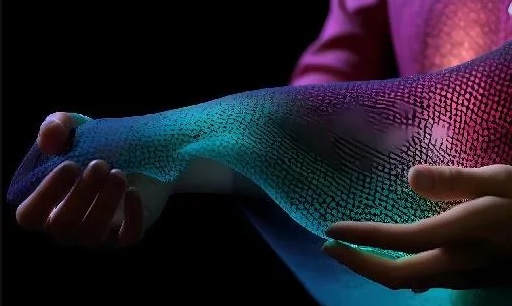
The functional textile market is experiencing a period of unprecedented growth, driven by numerous factors like: rising consumer awareness about health and wellness, advancements in technology, and increasing demand for performance apparels. These textiles, imbued with specific properties beyond aesthetics, are reshaping industries from apparel and sportswear to healthcare and automotive.
As per a report by MarketsandMarkets, the global functional textiles market was valued at $140.12 billion in 2022 and projected to $273.18 billion by 2031, growing at a CAGR of 7.7 per cent during the forecast period.
Health awareness, outdoor activities trigger growth
Several factors are pushing up growth of the functional textile market. Primary among them is growing awareness on health and wellness. Post-Covid years, there is more emphasis on health and fitness that has led to increased demand for athletic and performance wear, which often incorporates functional textiles. Demand for apparels with moisture-wicking, temperature-regulating, and antimicrobial properties have grown.
The growing elderly population is also driving demand for textiles with antimicrobial, moisture-wicking, and temperature-regulating properties. The popularity of outdoor activities like hiking, camping, and skiing has increased the need for durable and protective textiles. And functional textiles find applications in various industries, including healthcare, automotive, and military, contributing to market growth. Consumers are increasingly seeking eco-friendly and sustainable options, driving the development of recycled, organic, and biodegradable functional textiles.
Innovations in materials science and textile engineering are enabling the creation of textiles with enhanced functionalities. In fact, technology is at the heart of the functional textile revolution. Nanotechnology, for instance, is being used to impart water repellence, stain resistance, and UV protection to fabrics. Additionally, advancements in fiber engineering are leading to the development of high-performance fibers with superior strength, elasticity, and durability. The development of textiles with embedded sensors and electronics enables real-time monitoring of vital signs and environmental conditions.
Global market landscape
The Asia Pacific region is the largest consumer of functional textiles, driven by a growing middle class and increasing disposable incomes. Europe and North America follow closely, with a mature market and a strong preference for high-performance apparel.
China remains the dominant player in functional textile manufacturing, benefiting from a robust textile industry and cost-effective production. However, countries like India and Vietnam are emerging as manufacturing hubs due to lower labor costs and government support.
Downstream garment manufacturing
The growth of the functional textile market is directly impacting the downstream garment manufacturing industry. Brands are incorporating functional fabrics into their product lines to cater to the evolving consumer preferences. Athletic apparel brands, in particular, have been at the forefront of adopting functional textiles.
As experts say, functional textiles have revolutionized the way apparels are designed and manufactured. Consumers expect more than just style; they want performance and comfort, and functional textiles deliver on both fronts. Several companies are at the forefront of the functional textile market. Material science giants with companies like DuPont, Gore-Tex, and INVISTA are leading in developing innovative functional fibers and fabrics. Apparel brands too are in the race with Nike, Adidas, and Under Armour as major consumers of functional textiles have invested heavily in research and development to create high-performance apparel. Textile manufacturers like Toray Industries and Unifi are key players in the production of functional textiles.
Roadmap to future
While the functional textile market is experiencing significant growth, it also faces challenges such as high production costs, regulatory hurdles, and consumer education. However, the long-term outlook remains positive, driven by ongoing technological advancements, increasing consumer awareness, and the growing demand for sustainable and high-performance textiles.
The future of functional textiles is good, with the potential to transform various industries and improve people's lives. As research and development continue to accelerate, the industry can expect to see more innovative and functional textiles emerging in the market.
- 1
- 2
- 3
- 4
- 5
- 6
- 7
- 8
- 9
- 10
Blossom Premiere Vision returns in June to support luxury fashion's shifting nee…
As the global luxury goods market grapples with a prolonged slowdown, an industry once resilient to crises is now undergoing... Read more
Monforts technologies power sustainability showcase at Kingpins Amsterdam
Denim mills using Monforts systems dominate eco-focused fabric displays At the recent Kingpins Amsterdam exhibition held on April 16-17 at the... Read more
Bangladesh RMG exports navigate new skies amid cost concerns post India's trans-…
Bangladesh's RMG export is adapting to India's revocation of trans-shipment services, marked by maiden freighter flight carrying 60 metric tons... Read more
A stitch in time, fashion's 1% solution to a carbon crisis
The fashion industry, built on trends and textiles, is facing a stark reality: its environmental footprint is unsustainable. Hidden deep... Read more
Threadbare Foundations: Bangladesh’s RMG boom hangs by Indian yarns
Bangladesh’s ready-made garment (RMG) industry is a global juggernaut. Second only to China in apparel exports, the sector is the... Read more
Global fashion brands brace for tariffs, Zara, Shein, H&M, Fashion Nova navi…
Inditex, the parent company of fast-fashion giant Zara, remains "optimistic" about its growth prospects in the United States, even amidst... Read more
Where do donated clothes go? Report debunks landfill myth, highlights global reu…
Forget the image of mountains of discarded clothing polluting landfills. A new white paper by Bank & Vogue Ltd/Ltée reveals... Read more
India-UK FTA: New opportunities beckon Indian fashion retailers and brands
The just concluded Free Trade Agreement (FTA) between India and the UK, a culmination of over three years of negotiations,... Read more
ESG backlash and the future of sustainability in textiles, apparel, and fashion
Julia Vol’s LinkedIn post, echoing the Financial Times headline ‘ESG fund outflow hit record as sustainable investing backlash grows’, strikes... Read more
Hermès' Singular Vision Pays Off: Overtakes LVMH in market cap through decades o…
In a compelling narrative of focused growth versus diversified expansion, luxury powerhouse Hermès has shown the power of brand discipline,... Read more





